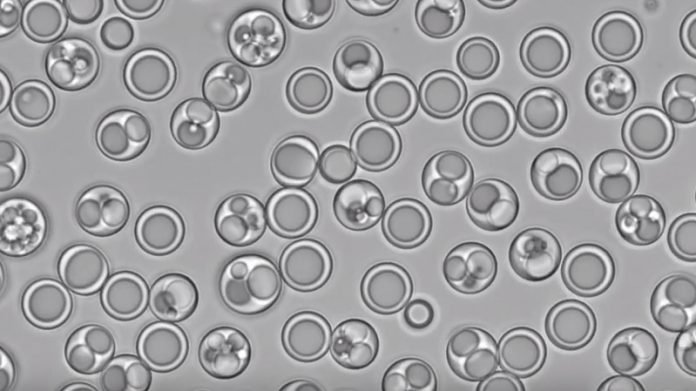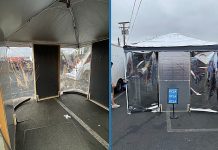
The need to carry things around is as old as humanity itself—we may have evolved to walk upright in part to carry tools—but transporting microscopic cargo has proved more challenging for scientists.
However, scientists from the University of Chicago and New York University have created a way to make tiny mechanical capsules that can pick up, carry, and release cargo on cue.
The results, published in Nature, could potentially have applications in medicine, pollution cleanup, or robotics.
“This is proof of concept of a very powerful piece of machinery, at a scale that’s difficult to achieve with other methods,” said Prof. William Irvine of UChicago, the co-corresponding author on the study.
The capsules are thin oil shells filled with delicious innards of your choice, not unlike the popping “boba” bubbles that you can get in milk tea, smoothies or frozen yogurt. But unlike boba, each capsule is only two microns across—a little bit smaller than a single red blood cell. They can be made to release their cargo on cue when exposed to light or a change in pH.
The scientists imagine multiple potential uses for the capsules, such as delivering drugs to specific areas of the body, cleaning up pollution or even microbes, or in building micromachines or soft robots.
The tiniest ferry
In nature, living organisms need a way to ferry molecules and chemicals to where they’re needed in the body. Cells have evolved elaborate systems to do so, and until now, it’s been very difficult for scientists and engineers to recreate similar systems.
“A single cell is actually one of the most complicated micromachines we know of,” said Stefano Sacanna, associate professor of chemistry at NYU and the study’s lead author. “This is the first artificial system that can mimic that process of active transport.”
To make the capsules, the researchers start with droplets of oil that they inflate like balloons using chemical reactions. Then they harden the shell by polymerizing it. Each capsule has an even tinier hole, and inside sits a tiny pump that can be activated to either suck in or expel liquid from the capsule’s surroundings.
“Having an autonomous particle that can actively ingest or expel material—that’s a highly desirable property, because now you can think of it as a microcontainer that you can fill at will,” said Sacanna. “The applications here are really up to your imagination.”
For example, they could be used for vacuuming up unwanted particles: “Think of them like the Pac-Man video game—they go around eating the pollutants and removing them from the environment,” Sacanna said.
That could even include viruses and bacteria; In the paper, they demonstrated using the system to suck up E. coli bacteria.
“Or you can imagine stuffing them with medicine, and then engineer them to release the medicine only when they get where you want them in the body,” Irvine said.
There are also potential applications in robotics and micromachines, or to build an artificial cell that mimics the functions of biological cells.
“The other nice thing is that it’s not a one-off—you can make these things in bulk,” Irvine said. “You can follow the recipe and get a billion droplets with a single pore each. That’s really difficult to do with other methods, and really important for research and scale-up.”
The scientists are actively exploring further uses.
The other authors of the paper were Zhe Xu and Theodore Hueckel of NYU.
Written by Louise Lerner.



